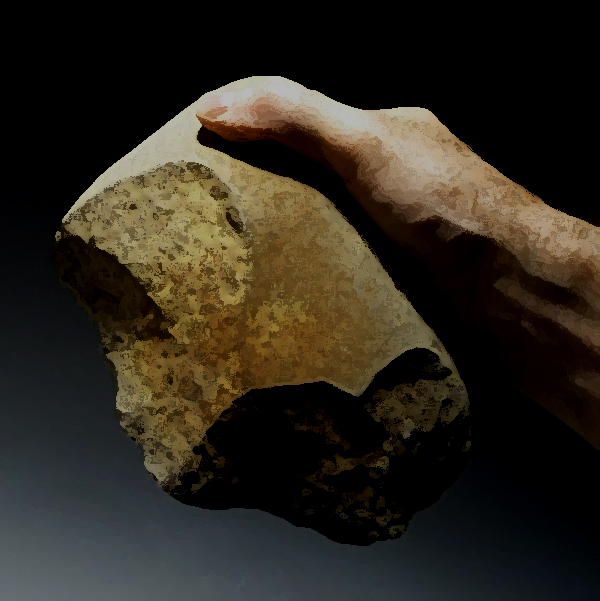


Stone tools may be older than humans: complex tool-making in Africa might have begun before the genus Homo.

An online article on Nature by Ewen Callaway - Oldest stone tools raise questions about their creators - asks if the 3.3 million-year-old implements predate the first members of the Homo genus.
The Lomekwi stone tools - the oldest known - are now thought to disprove the fact that complex tool-making began with the genus Homo; a more ancient hominin ancestor may have been responsible.
Initially, the work of Louis and Mary Leaky in the 1950's and 1960's in the Olduvai Gorge in Tanzania led to the term Homo habilis - the handy man - marking the beginning of human stone-tool use, with the Oldowan tools dated at 2.6 million years ago, coinciding with (or triggered by) climate changes which transformed forest to savannah. A new environment called for new 'crafted' tools; striking a rock with another, to produce a sharp edge.
In 2010 fossil bones with marks at the Dikika archaeological site in Ethiopia from 3.4 million years ago, attributed to Australopithecus afarensis ('Lucy'), were thought to demonstrate early tool use, but this still remains controversial.

Image: MPK/WTAP
Now the latest research at the Lomekwi site (above) near Kenya's Lake Turkana has revealed tools that were made through a flaking process, from sediments dated to around 3.3 million years ago. These tools are also much larger - up to 15 kg - than the Oldowan artefacts, representing a distinct culture - the Lomekwian culture. Researchers do not know with certainty who made the tools, possibly Kenyanthropus platyops or Australopithecus afarensis. The tools were made in a forest environment, not a drier savannah environment, which negates the climatic determinism referred to earlier.
Research is ongoing (Nature 520, 421 (23 April 2015) doi:10.1038/520421a), as is the debate.
Visit the ORIGINS section to read more about stone tools:
http://www.bradshawfoundation.com/origins/oldowan_stone_tools.php
by Bradshaw Foundation
Tuesday 21 March 2023
by Bradshaw Foundation
Tuesday 07 February 2023
by Bradshaw Foundation
Thursday 19 May 2022
by Bradshaw Foundation
Tuesday 19 October 2021
by Bradshaw Foundation
Friday 25 June 2021
by Bradshaw Foundation
Monday 09 November 2020
by Bradshaw Foundation
Tuesday 03 November 2020
by Bradshaw Foundation
Wednesday 28 October 2020
by Bradshaw Foundation
Tuesday 23 June 2020
by Bradshaw Foundation
Thursday 04 June 2020
by Bradshaw Foundation
Thursday 14 May 2020
by Bradshaw Foundation
Tuesday 12 May 2020
by Bradshaw Foundation
Wednesday 19 February 2020
by Bradshaw Foundation
Tuesday 21 January 2020
by Bradshaw Foundation
Monday 20 January 2020
by Bradshaw Foundation
Thursday 28 November 2019
by Bradshaw Foundation
Tuesday 21 March 2023
by Bradshaw Foundation
Tuesday 07 February 2023
by Bradshaw Foundation
Thursday 19 May 2022
by Bradshaw Foundation
Tuesday 19 October 2021
by Bradshaw Foundation
Friday 25 June 2021
by Bradshaw Foundation
Monday 09 November 2020
by Bradshaw Foundation
Tuesday 03 November 2020
by Bradshaw Foundation
Wednesday 28 October 2020
by Bradshaw Foundation
Tuesday 23 June 2020
by Bradshaw Foundation
Thursday 04 June 2020
by Bradshaw Foundation
Thursday 14 May 2020
by Bradshaw Foundation
Tuesday 12 May 2020
by Bradshaw Foundation
Wednesday 19 February 2020
by Bradshaw Foundation
Tuesday 21 January 2020
by Bradshaw Foundation
Monday 20 January 2020
by Bradshaw Foundation
Thursday 28 November 2019
Friend of the Foundation











